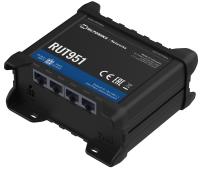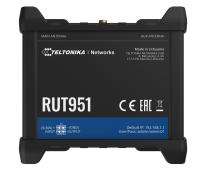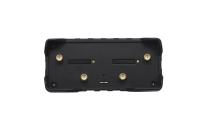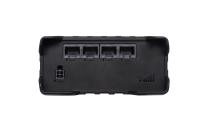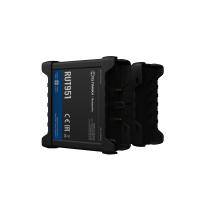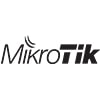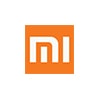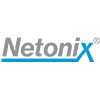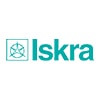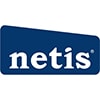TELTONIKA Dual SIM LTE Cat4 Industrial Cellular Router (RUT951)
4G LTE Cat 4 - up tp 150 Mbps | 1x 10/100 Mbps WAN port | 3x 10/100 Mbps LAN ports | IEEE 802.11b/g/n WiFi | RMS
| Price: * | For orders (total sum): |
| 217.80$ | >0$ |
| Contact for better prices | >500$ |
| >1000$ | |
| >5000$ | |
| >10000$ | |
|
In stock >20 pcs
|
|
Features:
// RUT951 took the best features from one of the most popular Teltonika Networks cellular routers - RUT950.
// This device features dual SIM 4G cellular connectivity combined with Wi-Fi and 4 Ethernet interfaces to meet the needs of the most varied IoT solutions.
// Automatic WAN failover to an available backup connection ensures network continuity and eliminates downtime.
// Powered by RutOS that offers customization options for professional use, automation features, and top-level security for your solution.
// Compatible with the Teltonika Networks Remote Management System (RMS) enables secure remote management to save time and expenses.
Specification:
MOBILE
Mobile module: 4G (LTE) – Cat 4 up to 150 Mbps, 3G – Up to 42 Mbps, 2G – Up to 236.8 kbps
SIM switch: 2 SIM cards, auto-switch cases: weak signal, data limit, SMS limit, roaming, no network, network denied, data connection fail, SIM idle protection
Status: Signal strength (RSSI), SINR, RSRP, RSRQ, EC/IO, RSCP, Bytes sent/received, connected band, IMSI, ICCID
SMS: SMS status, SMS configuration, send/read SMS via HTTP POST/GET, EMAIL to SMS, SMS to EMAIL, SMS to HTTP, SMS to SMS, scheduled SMS, SMS autoreply, SMPP
USSD: Supports sending and reading Unstructured Supplementary Service Data messages
Black/White list: Operator black/white list
Multiple PDN: Possibility to use different PDNs for multiple network access and services
Band management: Band lock, Used band status display
APN: Auto APN
Bridge: Direct connection (bridge) between mobile ISP and device on LAN
Passthrough: Router assigns its mobile WAN IP address to another device on LAN
WIRELESS
Wireless mode: IEEE 802.11b/g/n, Access Point (AP), Station (STA)
WiFi security: WPA2-Enterprise - PEAP, WPA2-PSK, WEP, WPA-EAP, WPA-PSK; AES-CCMP, TKIP, Auto Cipher modes, client separation
SSID/ESSID: SSID stealth mode and access control based on MAC address
WiFi users: Up to 100 simultaneous connections
Wireless Hotspot: Captive portal (Hotspot), internal/external Radius server, built in customizable landing page
ETHERNET
WAN: 1 x WAN port 10/100 Mbps, compliance IEEE 802.3, IEEE 802.3u standards, supports auto MDI/MDIX
LAN: 3 x LAN ports, 10/100 Mbps, compliance with IEEE 802.3, IEEE 802.3u standards, supports auto MDI/MDIX
NETWORK
Routing: Static routing, Dynamic routing (BGP, OSPF v2, RIP v1/v2, NHRP)
Network protocols: TCP, UDP, IPv4, IPv6, ICMP, NTP, DNS, HTTP, HTTPS, FTP, SMTP, SSL v3, TLS, ARP, VRRP, PPP, PPPoE, UPNP, SSH, DHCP, Telnet, SMPP, SMNP, MQTT, Wake On Lan (WOL)
VoIP passthrough support: H.323 and SIP-alg protocol NAT helpers, allowing proper routing of VoIP packets
Connection monitoring: Ping Reboot, Wget Reboot, Periodic Reboot, LCP and ICMP for link inspection
Firewall: Port forward, traffic rules, custom rules
DHCP: Static and dynamic IP allocation, DHCP Relay, Relayd
QoS / Smart Queue Management (SQM): Traffic priority queuing by source/destination, service, protocol or port, WMM, 802.11e
DDNS: Supported >25 service providers, others can be configured manually
Network backup: WiFi WAN, Mobile, VRRP, Wired options, each of which can be used as an automatic Failover
Load balancing: Balance Internet traffic over multiple WAN connections
Hotspot: Internal/external Radius server, captive portal, built in customizable landing page
SSHFS: Possibility to mount remote file system via SSH protocol
SECURITY
Authentication: Pre-shared key, digital certificates, X.509 certificates
Firewall: Pre-configured firewall rules can be enabled via WebUI, unlimited firewall configuration via CLI; DMZ; NAT; NAT-T
Attack prevention: DDOS prevention (SYN flood protection, SSH attack prevention, HTTP/HTTPS attack prevention), port scan prevention (SYN-FIN, SYN-RST, X-mas, NULL flags, FIN scan attacks)
VLAN: Port and tag based VLAN separation
Mobile quota control: Custom data limits for SIM card
WEB filter: Blacklist for blocking out unwanted websites, Whitelist for specifying allowed sites only
Access control: Flexible access control of TCP, UDP, ICMP packets, MAC address filter
VPN
OpenVPN: Multiple clients and a server can run simultaneously, 12 encryption methods
OpenVPN Encryption: DES-CBC, RC2-CBC, DES-EDE-CBC, DES-EDE3-CBC, DESX-CBC, BF-CBC, RC2-40-CBC, CAST5-CBC, RC2-64-CBC, AES-128-CBC, AES-192-CBC, AES-256-CBC
IPsec: IKEv1, IKEv2, with 5 encryption methods for IPsec (DES, 3DES, AES128, AES192, AES256)
GRE: GRE tunnel
PPTP, L2TP: Client/Server instances can run simultaneously, L2TPv3 support
Stunnel: Proxy designed to add TLS encryption functionality to existing clients and servers without any changes in the program’s code
DMVPN: Method of building scalable IPsec VPNs
SSTP: SSTP client instance support
ZeroTier: ZeroTier VPN client support
WireGuard: WireGuard VPN client and server support
MODBUS TCP SLAVE
ID range: Respond to one ID in range [1;255] or any
Allow Remote Access: Allow access through WAN
Custom registers: MODBUS TCP custom register block requests, which read/write to a file inside the router, and can be used to extend MODBUS TCP Slave functionality
MODBUS TCP MASTER
Supported functions: 01, 02, 03, 04, 05, 06, 15, 16
Supported data formats: 8 bit: INT, UINT; 16 bit: INT, UINT (MSB or LSB first); 32 bit: float, INT, UINT (ABCD (big-endian), DCBA (little-endian), CDAB, BADC)
MODBUS DATA TO SERVER
Protocol: HTTP(S), MQTT, Azure MQTT
MQTT GATEWAY
MQTT Gateway: Allows sending commands and receiving data from MODBUS Master through MQTT broker
DNP3
Supported modes: TCP Master, DNP3 Outstation
MONITORING & MANAGEMENT
WEB UI: HTTP/HTTPS, status, configuration, FW update, CLI, troubleshoot, event log, system log, kernel log
FOTA: Firmware update from server, automatic notification
SSH: SSH (v1, v2)
SMS: SMS status, SMS configuration, send/read SMS via HTTP POST/GET
Call: Reboot, Status, Mobile data on/off, Output on/off, answer/hang-up with a timer, WiFi on/off
TR-069: OpenACS, EasyCwmp, ACSLite, tGem, LibreACS, GenieACS, FreeACS, LibCWMP, Friendly tech, AVSystem
MQTT: MQTT Broker, MQTT publisher
SNMP: SNMP (v1, v2, v3), SNMP Trap
JSON-RPC: Management API over HTTP/HTTPS
MODBUS: MODBUS TCP status/control
RMS: Teltonika Remote Management System (RMS)
IOT PLATFORMS
Cloud of Things: Allows monitoring of: Device data, Mobile data, Network info, Availability
ThingWorx: Allows monitoring of: WAN Type, WAN IP, Mobile Operator Name, Mobile Signal Strength, Mobile Network Type
Cumulocity: Allows monitoring of: Device Model, Revision and Serial Number, WAN Type and IP, Mobile Cell ID, ICCID, IMEI, Connection Type, Operator, Signal Strength
Azure IoT Hub: Can send device IP, Number of bytes send/received, Temperature, PIN count to Azure IoT Hub server, Mobile connection state, Network link state, IMEI, ICCID, Model, Manufacturer, Serial, Revision, IMSI, SIM State, PIN state, GSM signal, WCDMA RSCP, WCDMA EC/IO, LTE RSRP, LTE SINR, LTE RSRQ, CELL ID, Operator, Operator number, Connection type
SYSTEM CHARACTERISTICS
CPU: Mediatek MIPS 24Kc 580 MHz
RAM: 128 MB, DDR2
FLASH storage: 16 MB, SPI Flash
FIRMWARE / CONFIGURATION
WEB UI: Update FW from file, check FW on server, configuration profiles, configuration backup, restore point
FOTA: Update FW
RMS: Update FW/configuration for multiple devices at once
Keep settings: Update FW without losing current configuration
FIRMWARE CUSTOMIZATION
Operating system: RutOS (OpenWrt based Linux OS)
Supported languages: Busybox shell, Lua, C, C++
Development tools: SDK package with build environment provided
INPUT / OUTPUT
Input: 1 x Digital Input, 0 - 6 V detected as logic low, 8 - 30 V detected as logic high
Output: 1 x Digital Output, Open collector output, max output 30 V, 300 mA
Events: Email, RMS, SMS
I/O juggler: Allows to set certain I/O conditions to initiate event
POWER
Connector: 4-pin industrial DC power socket
Input voltage range: 9 – 30 VDC, reverse polarity protection; surge protection >31 VDC 10us max
PoE (passive): Passive PoE over spare pairs. Possibility to power up through LAN port, not compatible with IEEE802.3af, 802.3at and 802.3bt standards, Mode B, LAN1 Port, 9 - 50 VDC
Power consumption: < 2 W idle, < 7 W Max
PHYSICAL INTERFACES (PORTS, LEDS, BUTTONS, SIM)
Ethernet: 4 x RJ45 ports, 10/100 Mbps
I/O’s: 1 x Digital Input, 1 x Digital Output on 4-pin power connector
Status LEDs: 1 x bi-color connection status LED, 5 x connection strength LEDs, 4 x LAN status LEDs, 1 x Power LED
SIM: 2 x SIM slots (Mini SIM - 2FF), 1.8 V/3 V, external SIM holders, eSIM (Optional)
Antennas: 2 x SMA for LTE, 2 x RP-SMA for WiFi antenna connectors
Reset: Reboot/User default reset/Factory reset button
PHYSICAL SPECIFICATION
Casing material: Aluminium housing, plastic panels
Dimensions (W x H x D): 110 x 50 x 100 mm
Weight: 287 g
Mounting options: DIN rail (can be mounted on two sides), flat surface placement
OPERATING ENVIRONMENT
Operating temperature: -40 °C to 75 °C
Operating humidity: 10% to 90% non-condensing
Ingress Protection Rating: IP30
REGULATORY & TYPE APPROVALS
Regulatory: CE/RED, UKCA, CB
EMI IMMUNITY
IMMUNITY Standards: EN 301 489-1 V2.2.3 EN 301 489-17 V3.2.4 Final draft EN 301 489-52 V1.2.0 EN 55032:2015+A1:2020 EN 55035:2017+A11:2020 EN 61000-3-3:2013+A1:2019 EN IEC 61000-3-2:2019
ESD: EN 61000-4-2:2009
RS: EN 61000-4-3:2020
EFT: EN 61000-4-4:2012
Surge immunity (AC Power Line): EN 61000-4-5:2014+A1:2017
CS: EN 61000-4-6:2014
DIP: EN IEC 61000-4-11:2020
RF
Standards: EN 300 328 V2.2.2, EN 301 511 V12.5.1, EN 301 908-1 V13.1.1, EN 301 908-2 V13.1.1, EN 301 908-13 V13.1.1
SAFETY
Standards: EN IEC 62311:2020, EN 50665:2017, EN IEC 62368-1:2020+A11:2020, IEC 62368-1:2018


